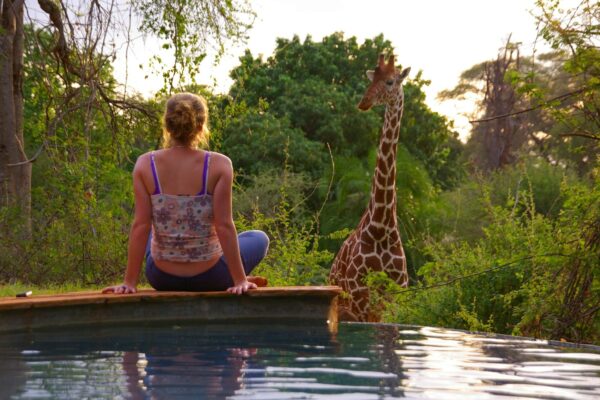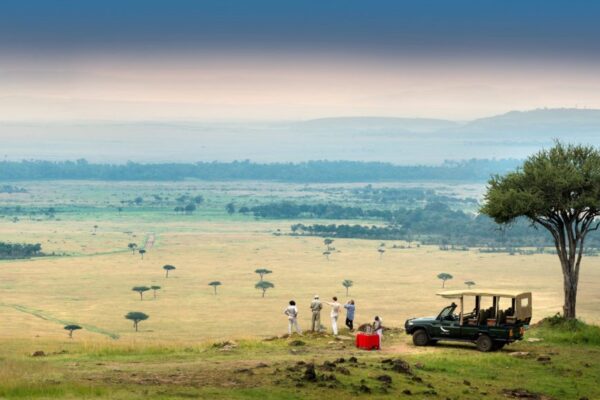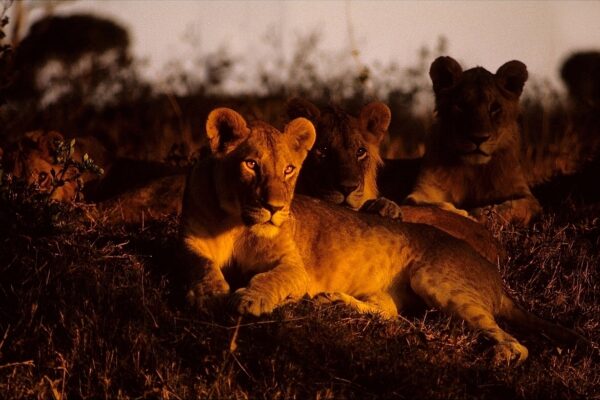
Top 5 Safari Activities to Experience in Rwanda
April 7, 2025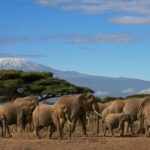
Your First Safari: What to Expect and How to Prepare
April 7, 2025Packing Essentials for a Safari: A Photographer’s Guide
A safari in Africa is a dream adventure for many travelers, and for photographers, it’s an unparalleled opportunity to capture some of the world’s most breathtaking wildlife and landscapes. However, preparing for a safari as a photographer requires careful planning, particularly when it comes to the gear you’ll need to bring. Whether you’re a professional photographer or an enthusiastic hobbyist, the right equipment and preparation will ensure that you don’t miss the perfect shot.
At Traford Safaris, we understand the importance of capturing those once-in-a-lifetime moments, and we pride ourselves on providing expert guidance and support for photographers, including ensuring that your heavy camera gear is safely transported. In this guide, we’ll walk you through the essential packing tips every photographer should follow before embarking on a safari adventure. We’ll cover the best gear to pack, how to protect your equipment, and how to maximize your chances of capturing stunning wildlife shots.
1. Choosing the Right Camera Gear for Your Safari

When it comes to selecting camera gear for a safari, it’s crucial to balance weight, functionality, and the ability to capture high-quality images in a variety of lighting conditions. Wildlife photography can be unpredictable, and having the right gear is essential to ensure you don’t miss a moment. Here’s a breakdown of what you’ll need to pack:
Camera Body: Choosing Between DSLR or Mirrorless
The foundation of your camera gear is the camera body. Most wildlife photographers prefer DSLR or mirrorless cameras due to their high image quality, fast autofocus, and compatibility with a wide range of lenses. For safaris, we recommend a full-frame or crop-sensor camera with a fast autofocus system to ensure sharp and detailed shots of fast-moving animals.
A DSLR camera provides excellent battery life and can handle long shooting sessions in the field, making it a solid choice for safari photography. Mirrorless cameras, on the other hand, are more compact, lightweight, and have the added advantage of live view and silent shooting modes, which can be helpful when photographing sensitive wildlife. Both options are excellent, but the key is to choose a camera that you are familiar with and comfortable using.
Lenses: Packing Versatile Lenses
Lenses are arguably the most important pieces of gear for wildlife photography. A safari presents a wide range of subjects, from distant animals on the savannah to close-ups of birds and insects in the underbrush. The ideal lens kit for safari photography usually includes:
- Telephoto Lens (200mm to 600mm): This is perhaps the most critical lens for wildlife photography on safari. A long telephoto lens allows you to capture distant animals without disturbing them, ensuring both safety and great shots. It also gives you the flexibility to photograph birds and animals from a distance.
- Wide-Angle Lens (16mm to 35mm): While telephoto lenses are essential, a wide-angle lens can be invaluable when you want to capture the vast landscapes, sweeping plains, or dramatic skies that African safaris are known for. A wide-angle lens is perfect for showing the broader environment where animals roam.
- Standard Zoom Lens (24mm to 70mm): This lens is ideal for general photography, especially when you’re shooting animals or landscapes that are closer. It’s also useful for environmental portraits, capturing both wildlife and their surroundings.
Other Essential Gear
In addition to your camera and lenses, several other accessories are essential for a successful safari:
- Tripod: A sturdy tripod is indispensable for long exposures, especially during early morning or late evening shoots when the light is low. It can also help reduce camera shake for wildlife shots.
- Extra Batteries & Memory Cards: Africa’s hot temperatures can drain camera batteries quickly, so it’s important to pack plenty of spare batteries. Similarly, bring extra memory cards, as you’ll likely be taking hundreds or even thousands of shots.
- Filters: Polarizing filters are excellent for reducing glare and enhancing the colors of the sky and vegetation. A UV filter can also protect your lens from dust and scratches.
2. Protecting Your Gear: Safeguarding Equipment in Harsh Conditions
Africa’s safari environments can be challenging for photographers. From the heat and dust of the savannah to the humid rainforests, your camera gear needs protection. Safeguarding your equipment should be a priority, and here’s how you can do it:
Camera Bag: Choosing the Right One
The right camera bag is essential for keeping your gear safe and easily accessible. Opt for a weather-resistant camera bag that offers enough space for your camera body, lenses, tripod, and other accessories. A bag with compartments is ideal, as it allows you to organize your equipment efficiently. Choose a bag that’s both sturdy and lightweight—something comfortable to carry for long hours on game drives or treks.
A backpack-style camera bag provides comfort and balance, especially if you plan to carry a lot of gear. Additionally, consider a waterproof camera rain cover for unexpected weather, ensuring that your gear stays dry during sudden downpours.
Dust and Sand Protection
The African safari terrain is often dusty, particularly in more remote or dry areas. You must take precautions to protect your gear from dust and sand. Always keep your camera equipment in a dustproof bag when it’s not in use, and clean your gear regularly using a lens cleaning kit with a soft brush to avoid scratching the lens. When photographing in dusty environments, use a lens hood to help keep dust away from the front element of your lens.
Protection from the Elements
Weather conditions in Africa can change rapidly, from scorching sun to unpredictable rain. It’s essential to bring weatherproofing equipment such as a rain cover for your camera and a lens cloth to wipe off moisture or condensation. Always keep your camera gear in a safe, dry place when not in use to prevent exposure to the elements.
3. Maximizing Your Chances of Capturing the Perfect Shot
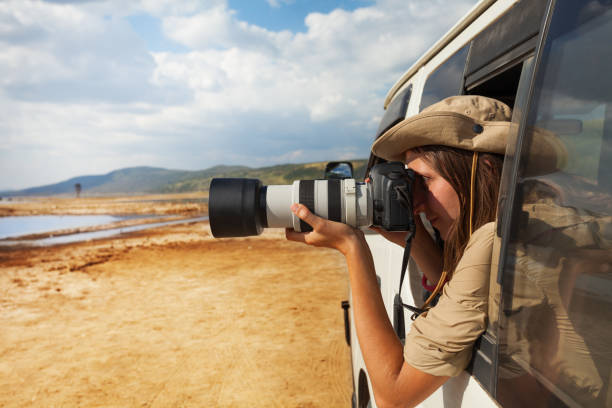
Side view portrait of young woman taking photo of Kenyan lake Nakuru from the open window of safari jeep
Photographing wildlife in Africa can be unpredictable, so being prepared is key to capturing stunning shots. Here are some tips for making the most of your safari photography:
Use Natural Light to Your Advantage
In wildlife photography, lighting can make or break a shot. The best times for photographing animals are usually early in the morning and late in the afternoon, when the light is softer and creates beautiful shadows. Golden hour—the first hour after sunrise and the last hour before sunset—is ideal for capturing vibrant colors and dynamic compositions.
Avoid shooting in the harsh midday sun, as this often results in overexposed images with harsh shadows. A polarizer filter can help reduce glare and reflections, especially when photographing animals near water.
Get Comfortable with Your Gear
Familiarity with your equipment is crucial when you’re on a safari. You may only have a few moments to capture a unique wildlife behavior or an animal in an extraordinary pose. Practice adjusting settings like ISO, shutter speed, and aperture quickly to ensure you can shoot on the fly. Understanding your camera’s autofocus system and continuous shooting modes will also improve your chances of capturing fast-moving subjects.
Focus on Composition
Great wildlife photography isn’t just about taking a sharp shot—it’s about telling a story through composition. Try to incorporate the environment around the animal, showcasing the habitat and surroundings. Rule of thirds is an effective technique for wildlife composition, helping to create balanced and visually appealing images. Look for interesting angles, light, and moments that convey the essence of the scene.
Respect the Wildlife
While it’s tempting to get the perfect shot, always prioritize the safety and comfort of the animals you’re photographing. Follow the guidelines provided by your safari guide, and never attempt to get too close to the animals. Using a telephoto lens allows you to capture animals from a safe distance without disturbing their natural behaviors.
4. Accommodating Heavy Camera Equipment on Safari
One of the challenges that photographers face while traveling on safari is managing heavy camera equipment. At Traford Safaris, we understand that some photographers prefer to bring a significant amount of gear to ensure they have the tools necessary to capture the best shots. We offer tailored safari experiences that accommodate photographers with large camera bags, tripods, and multiple lenses.
Transporting Your Gear Safely
When traveling to remote areas, the safaris we arrange provide ample space in our vehicles to ensure your gear is transported safely. Our guides are trained in handling photography equipment, so you don’t have to worry about your gear during game drives or hikes. We also provide secure storage options at accommodations to ensure that your equipment stays safe when not in use.
5. Additional Tips for Safari Photographers
- Stay Hydrated and Protected: Africa’s heat can be intense, especially during the day. Always carry water and wear sunscreen to protect your skin. A wide-brimmed hat can also help shield your face and neck from the sun.
- Prepare for Long Days: Safaris often involve long days of travel and game drives. Bring comfortable clothing, snacks, and be prepared for a physically demanding yet exciting adventure.
Conclusion: Ready to Capture the Wild
A safari is the ultimate opportunity to photograph Africa’s incredible wildlife in their natural habitat. By packing the right camera gear, protecting your equipment from the elements, and preparing yourself for the unique challenges of wildlife photography, you’ll be well-equipped to capture breathtaking images that will last a lifetime.
At Traford Safaris, we specialize in creating unforgettable safari experiences for photographers, from accommodating heavy camera gear to providing expert guidance. Whether you’re a professional photographer or simply someone passionate about capturing nature, we ensure that your safari journey is filled with incredible photographic opportunities.
Book your safari with Traford Safaris today and get ready to capture the wild beauty of Africa through your lens!



